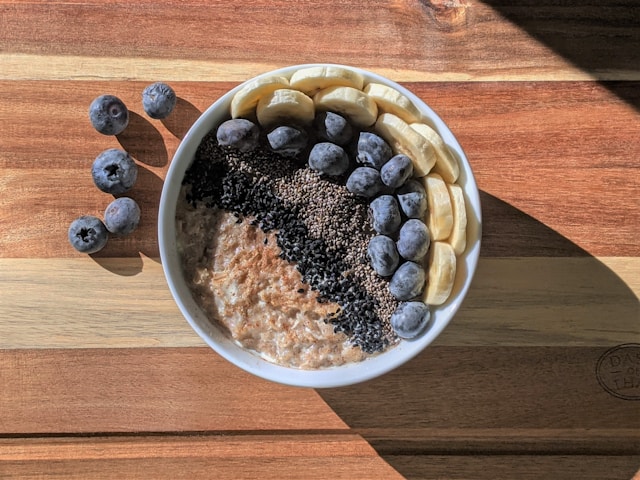Contents
Tiny But Mighty: The Chia Seed Saga
Alright, so chia seeds—yeah, those weird little things sticking to your teeth after a smoothie—aren’t just riding some new-age health trend. Nope. The Aztecs and Mayans were munching on these way, way before Instagram ever existed. “Chia” actually means “strength” in Mayan, which honestly makes sense ‘cause these seeds were like ancient power bars for warriors trekking through jungles or heading to battle. Kind of wild to think about, right?
Chia’s not just having a moment; it’s having a comeback tour. You’ll see these seeds in everything from $10 smoothie bowls at hipster cafes to, I dunno, your grandma’s yogurt. Their resume? Impressive. But it’s what’s inside that counts. Seriously, these guys are nutritional overachievers.
What’s Actually In a Chia Seed?
Don’t let the size fool you. These babies are tiny but straight-up loaded. Black or white, they’re stacked with fiber, protein, omega-3s (the good kind for your heart and brain), plus minerals like calcium, magnesium, and phosphorus. Basically, they’re a mini multivitamin disguised as bird food.
Here’s the breakdown for two tablespoons (about 28 grams):
Fiber: 11g (almost half your daily thing—good luck finding that elsewhere)
Protein: 4g, and it’s the complete kind (so, all the amino acids, like a boss)
Omega-3 (ALA): 5g (your heart and brain are fist-bumping right now)
Calcium: 18% of your daily needs—eat that, milk
Magnesium: 30% of your daily needs, which is wild
Iron: 15%
Calories: Roughly 137 (not bad, considering everything else packed in there)
They’re gluten-free, low-carb, fit for vegans, keto folks, paleo die-hards, whatever. Oh, and they soak up water like sponges—up to 12 times their weight. That keeps you full and makes them a sneaky weapon against snack attacks and sugar crashes.
Science-Backed Perks
Okay, so what’s the hype? Turns out, there’s actual real science behind these seeds. Not just blogger hype. Here’s what they do for you:
Gut Stuff
Thanks to the fiber, things… move. You’ll spend less time, uh, waiting around in the bathroom. Plus, your gut bacteria will throw a party.
Weight? Managed.
Fiber + protein = you stay full. Seriously, these swell up in your stomach and make you feel like you ate more than you did. Less snacking, less regret.
Happy Heart
Chia’s loaded with ALA, a plant-based omega-3. That stuff helps kick bad cholesterol and inflammation to the curb. Your arteries will thank you.
Bones of Steel
Tons of calcium, magnesium, and phosphorus. Two tablespoons? More calcium than a glass of milk. Lactose intolerant people, rejoice.
Blood Sugar: Leveled Out
Chia slows down sugar absorption, which is great if you’re watching your blood sugar or trying to avoid those energy crashes.
Skin Perks
Antioxidants fight off those pesky free radicals. Some beauty brands even toss chia oil into their potions now. Not magic, but hey, every bit helps.
How the Heck Do You Eat Chia Seeds?
Easy. Literally, you can sneak ‘em into anything. Their flavor is so mild, you’ll barely know they’re there—until you’re full and feeling smug.
Chia Pudding
Two tablespoons chia, half a cup of almond milk (or whatever you’re into), splash of vanilla, maybe some honey. Stir, stash in the fridge overnight. Boom—breakfast pudding.
Smoothie Level-Up
Throw a spoonful into your smoothie. More fiber, more omega-3s, slightly thicker texture. Can’t taste ‘em, but you’ll feel the difference.
Chia Water (aka Chia Fresca)
Mix chia seeds into lemon or coconut water. Wait a few minutes, chug. It’s a classic in Latin America. Hydrates you and keeps you full. Weirdly satisfying.
Baked Goods
Toss ‘em in muffins, pancakes, whatever. Adds crunch and nutrition without messing up your recipe.
Egg Swap
Vegan? No eggs? No problem. One tablespoon chia + 2.5 tablespoons water, wait for it to get gooey. Use as a binder in baking. Works shockingly well.
Chia, Flax, Basil—Wait, What’s the Difference?
People mix these up all the time. Yeah, they look kinda similar and you’ll find them all at the health food store, but don’t get it twisted—they each have their own vibe and benefits.
Chia Seeds
These little guys puff up into this weird jelly goo when you get ‘em wet. They’re basically tasteless, so you can throw them in anything and you won’t even notice. Loaded up with omega-3s, fiber, calcium… all that jazz. Eat them raw, soak them, sprinkle them on your cereal—whatever.
Flax Seeds
Here’s the thing with flax: you gotta grind them up first. Otherwise, your body just… doesn’t really get the nutrients. They’ve got this kinda nutty vibe flavor-wise, and they’re packed with plant antioxidants (lignans) and omega-3s too. Awesome in muffins or mixed into your oatmeal.
Basil Seeds (Sabja)
You’ll see these a lot in Indian and Middle Eastern drinks, especially in the summer. Gotta soak ‘em—don’t skip that part. They’re supposed to have this “cooling” effect on your body, which sounds made up until you’re melting in June and suddenly, you get it. Also big in Ayurvedic stuff.
So, which is the “best”? Honestly, chia is the MVP—super easy to use and loaded with nutrients. But flax wins for antioxidants, and basil seeds? They’re the chill-out champs, great for hot weather or detoxes.
Now, who should maybe skip the chia craze?
People with touchy tummies: Chia’s fiber is no joke. Go slow, or you’ll be in Bloat City. And drink water. Like, a lot.
Allergies: Not super common, but yeah, some folks react. Rashes, hives, trouble breathing? Stop eating them and call your doc.
Blood pressure or sugar meds: Chia can drop your numbers, so if you’re on medication, check in with your doctor first.
Choking hazard: Dry chia seeds + not enough water = possible choking nightmare. Soak them, or at least chase them with a big glass of water.
And hey, don’t overhaul your diet without chatting to a nutritionist or your doctor, especially if you’ve already got health stuff going on.
Chia Seed FAQ—Let’s Go Rapid Fire
Can I eat them dry?
You can, but honestly, they’re way easier to digest (and less likely to stick in your throat) if you soak them or at least drink a bunch of water.
How much is too much?
1–2 tablespoons a day is the sweet spot. More than that and your digestive system might complain.
Are they good for weight loss?
Oh for sure. They keep you full, so you snack less. Not magic, but they help.
Side effects?
Most people are fine. Some get gassy or bloated if they overdo it. Allergies are rare, but don’t ignore weird symptoms.
When’s the best time to eat them?
Mornings are solid for an energy kick. Pre-meal if you wanna curb your appetite. Post-workout works too.
Can kids have chia?
Yeah, totally—just don’t go overboard, and make sure they’re soaked so there’s no choking drama.
How long do they last?
If you stash them in a cool, dry spot, chia seeds can hang out for up to 2 years. They don’t go bad fast.
Want more recipes?
Google “chia pudding” and thank me later. Or hit up Healthline’s guide if you want to get all official about it.






14 Comments